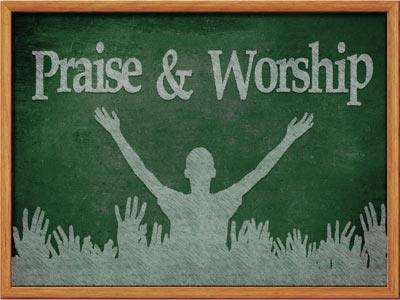-
What About Your Gestures?
Contributed by Scott Carmer on Nov 28, 2017 (message contributor)
Summary: The gestures of worship - lifting up holy hands in praise - must be in sync with the gestures of holy living.
Gesture Theology
Ephesians 5:15-20
August 20, 2006
I remember the very first sermon I ever preached. It was at License to Preach School down at DePauw University during the summer of 1972, between my freshman and sophomore years in college. I knew that I was headed for seminary by that time, and my pastor thought that this was something I should do. Besides, I thought that a license to preach might help me get a student appointment while I was still in college.
License to Preach School (they call it something different now) was an introduction to ministry. We took introductory classes on theology, ethics, The Discipline, and preaching. My first sermon was preached there and was five minutes long.
Now you have to remember what the times were like in 1972. We were pretty laid back and trying to be cool. I had hair down to the middle of my back. I wore blue jeans, was barefoot, and preached with my hands in my pockets. I have no idea what the sermon was about, but I’m sure it was lousy.
I’ve learned a few things about preaching in the intervening years. One of the things I have learned is that you can’t preach with your hands in your pockets. Besides looking pretty goofy, with your hands in your pockets, you can’t use any gestures. I tend to talk with my hands anyway, and not to use them when preaching would really put a crimp in my style. Without the ability or the freedom to gesture, most of us would be hindered in our everyday work and conversation.
There is a new computer technology that is coming to us in the near future. It is called “gesture technology.” It is technology right out of science fiction. Not too long ago, I watched a television rerun of the movie, “Minority Report.” It stars Tom Cruise and is set in the year 2054. I remember seeing it in the theaters when it was released back in 2002.
In the movie, law enforcement authorities have developed the ability to see crimes that are about to happen so that they can arrest the perpetrators before they actually commit the crime. Tom Cruise is a police officer and works for this “pre-crime” unit.
There’s a scene in which he is standing before a huge computer screen looking at crime reports. He is moving data from one column to another, deleting what he doesn’t need, and arranging it so that it makes sense. He’s doing it all with his hands. He simply points and drags the data with his fingers.
Back in the present, we are on the verge of actually developing this technology. In one experimental program, programmers have developed a set of gloves which can be worn by an operator. With the gloves, pictures and data can be manipulated on the screen. Apparently there are about 20 gestures to which the computer will respond.
Gesturing is important. It is one of the ways we communicate. Even the Psalms point to the value of the gesture to communicate with God.
One of the things you have to admit about United Methodists is that we are not very demonstrative in our worship practices. We’re all pretty well behaved. We sit pretty still. Even on Sunday nights around here, when the style is a lot less formal and the music a lot louder, we tend not to be very animated.
The psalms are good places to go to help limber us up, to get a sense of how important gestures were to worshipping congregations back them. Here are just a few examples.
Psalms 28:1-2 says, “To you O Lord, I call…Hear the voice of my supplications as I cry to you for help, as I lift up my hands toward your most holy sanctuary.”
Psalms 63:4 says, “So I will bless you as long as I live. I will lift up my hands and call on your name.”
There are others places in the Bible that also underscore the importance and common usage of gestures in the act of worship. Lamentations 2:19 says, “Arise, cry out in the night…Pour out your heart like water before the presence of the Lord. Lift up your hands to him.”
Even in the New Testament, we hear Paul’s advice to Timothy: “I desire then, that in every place the men should pray, lifting up holy hands without anger or argument” (I Tim. 2:8).
I am often asked if I prefer traditional or contemporary worship. I usually start my response by reminding folks that the worship style we call traditional was at one time really contemporary and cutting edge. In fifty years, if any of us are still around, we will be rebelling against some new style of worship in that time. We’ll say something like this: “If it was good enough for us in 2006, it ought to be good enough for our grandchildren.”

 Sermon Central
Sermon Central



